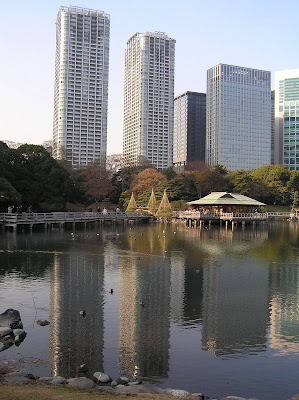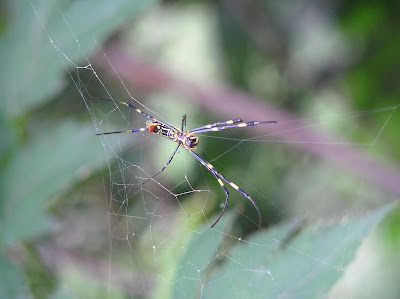Final Reflection

These towers are actually larger than the two behind me in this photograph. The wall of towers featured in the previous blog post cannot compare to the bulk of this pair. Each side contains enough windows and balconies for at least seven apartments, and the buildings are about fifty stories high.
The only comparison I can draw is the Pan Am building in Midtown Manhattan. This may be Brutalist architecture's greatest example in Tokyo. Why they elected to build these two monstrosities so close is beyond me.
Fortunately, they make for a beautiful reflection in this tidal pond. The bridge in the center leads to a tea house (off the picture, to the right).


















